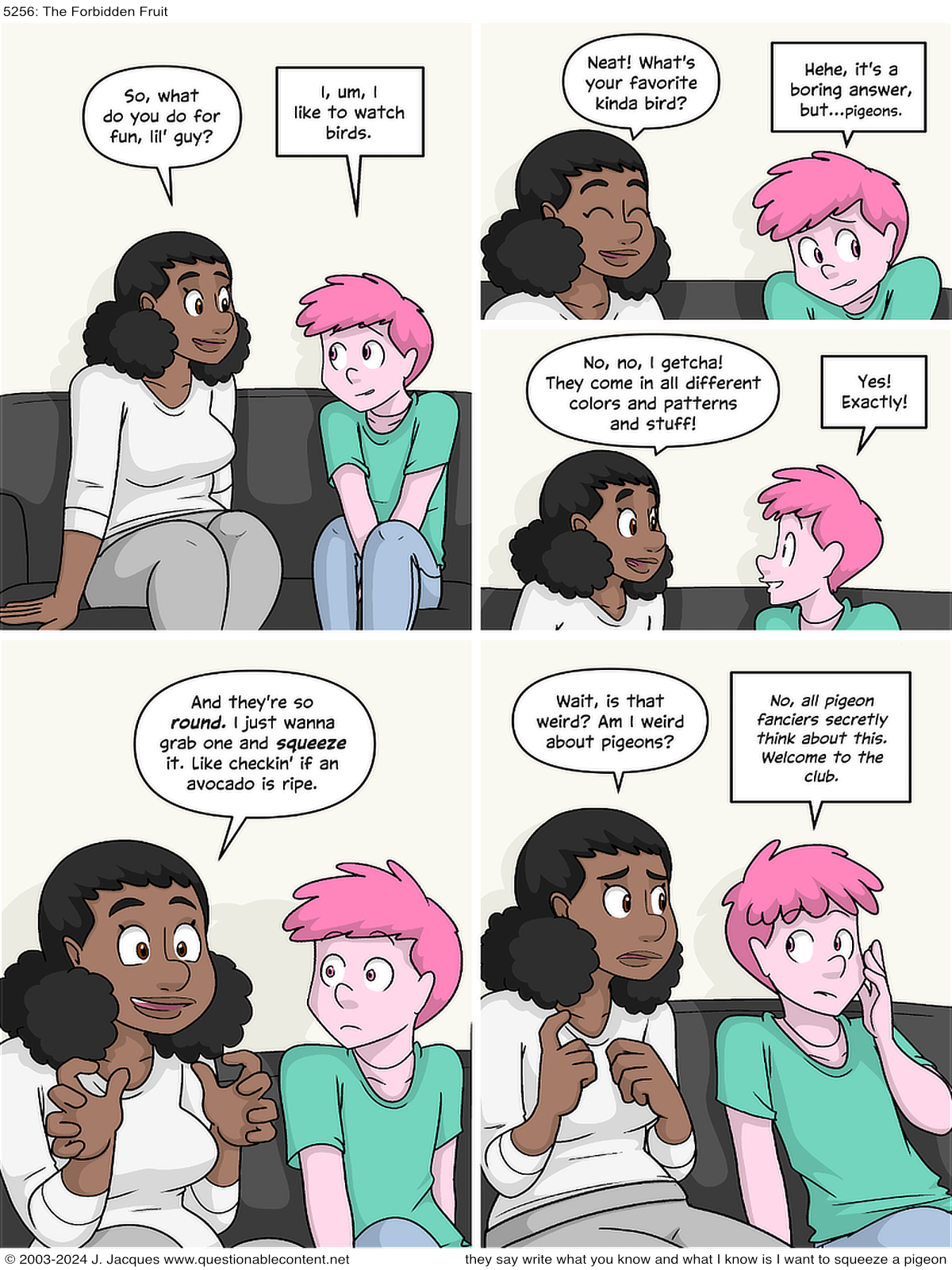
do not squeeze a wild animal
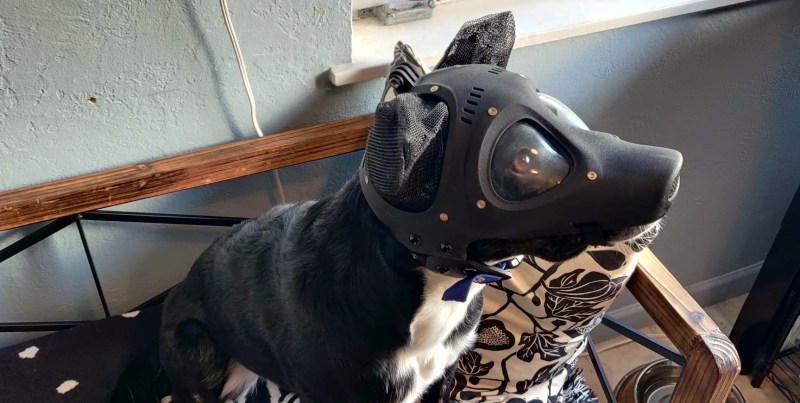
Our canine partners are fortunately not affected by the current global pandemic, but it turns out there are other dangers that might necessitate them to wearing masks: Foxtail seeds. After getting a $400 vet bill for extracting a foxtail from his dog, [Hildeguard]’s ear, [Amos Dudley] decided to take the threat seriously and made her a form-fitting 3D printed mask.
The only commercial solution [Amos] could find was the “OutFox Field Guard”, which is a $50 vinyl-coated mesh bag that covers the dog’s entire head. It had the unfortunate side effects of causing some other dogs to try and rip it off and does not allow easy access to the mouth for treats or balls. [Hilde]’s custom mask was designed in CAD after creating a rough 3D scan of her head with an iPhone app. The bottom is open to allow [Hilde] to freely use her mouth, while the nose and ears holes are covered with mesh. Custom heat-formed polycarbonate lenses cover the eye holes. The mask itself was printed using Draft resin, and the inside was padded with a thin layer of foam. It might also be possible to create a silicone version using a 3D-printed mold. The top features an integrated GoPro mount, and we can’t help but wonder what other electronic upgrades could be fitted to this sci-fi-looking mask.
In the field, the mask worked well and did not seem to bother [Hilde]. Unfortunately, it did not solve the problem of other dogs trying to rip it off at the park, so for the moment [Amos] is only using it for more solitary activities like hiking.
It doesn’t look like [Amos] is struggling in that department, but if you need some help burning of your dog’s energy, you can always built them a 3D printed automatic ball launcher.
When we talk of electronics the trend is to shrink down the size of already existing technology while making it better in terms of usability. The same is true for audio equipment and believe it or not a newly developed iteration of speakers by the scientists at Germany’s Chemnitz University’s Print and Media Technology institute will catch your attention beyond comprehension. No more than a roll of paper that can be tailored into circular rings to encapsulate the listener in immersive audio, the research is backed by years of hard work and determination to achieve this form factor.
The ultimate goal is to design low-cost entertainment systems for modern interiors that embrace anything that’s highly functional and minimal in its look. So, a future where your music system will merely be a thin sheet of paper that can be placed anywhere on the walls or ceiling is more than a feasible possibility. The team of researchers headed by Prof. Dr. Arved C. Hübler has been working to improve the sonorous paper loudspeakers by Chemnitz which produce sound by displacing air to create a vibration. Hence, came into existence the roll-to-roll printed speaker paper, a.k.a. T-Paper which is more economical to produce – virtually in a roll form. According to project manager Georg C. Schmidt, the newly developed technology allows them to laminate the electronics for better feasibility in practical use. “In our T-Ring prototype, an almost four-meter-long track with 56 individual loudspeakers was connected to form seven segments and shaped into a circle, making a 360° surround sound installation possible,” says Schmidt.
This means that in the near future we could see the technology being implemented in trade shows, museums, or the advertising industry. The T-Ring that the team has developed for now is nothing but 90 percent conventional paper with electronics sandwiched to generate sound that surrounds the listener for an expanded soundscape for realism. The possibilities with this technology are endless and in the coming years, we could see home entertainment systems embedded into the home décor objects for a seamless design and superior audio experience at a very low-cost thanks to the developments by Print and Media Technology institute.
Designer: Chemnitz University of Technology (Visuals: TU Chemnitz/Jacob Müller)
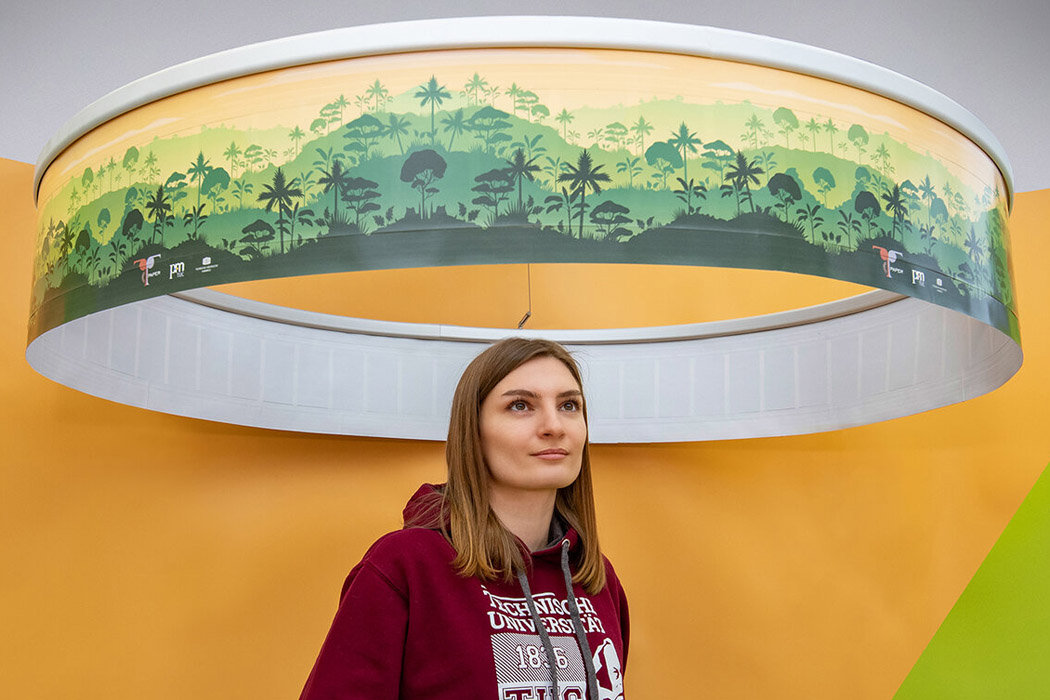
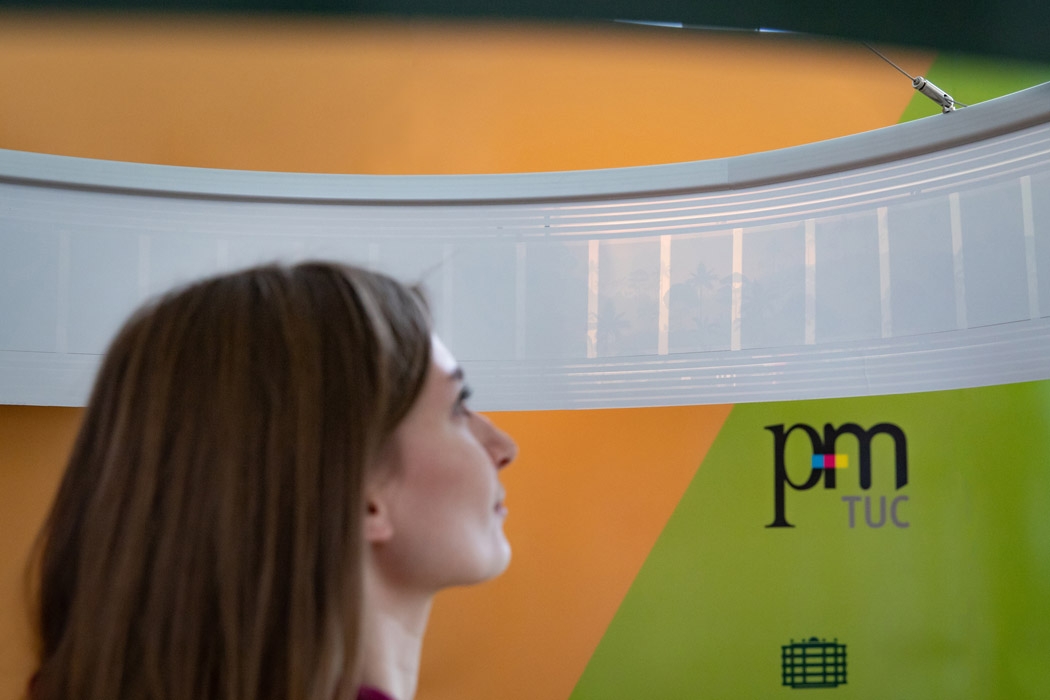
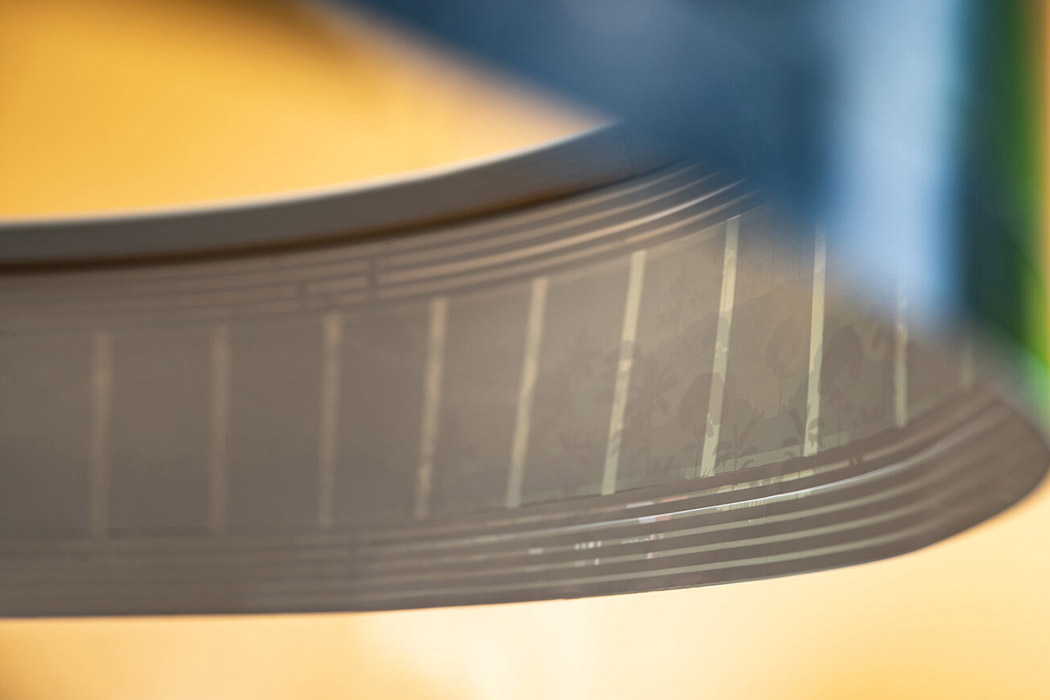
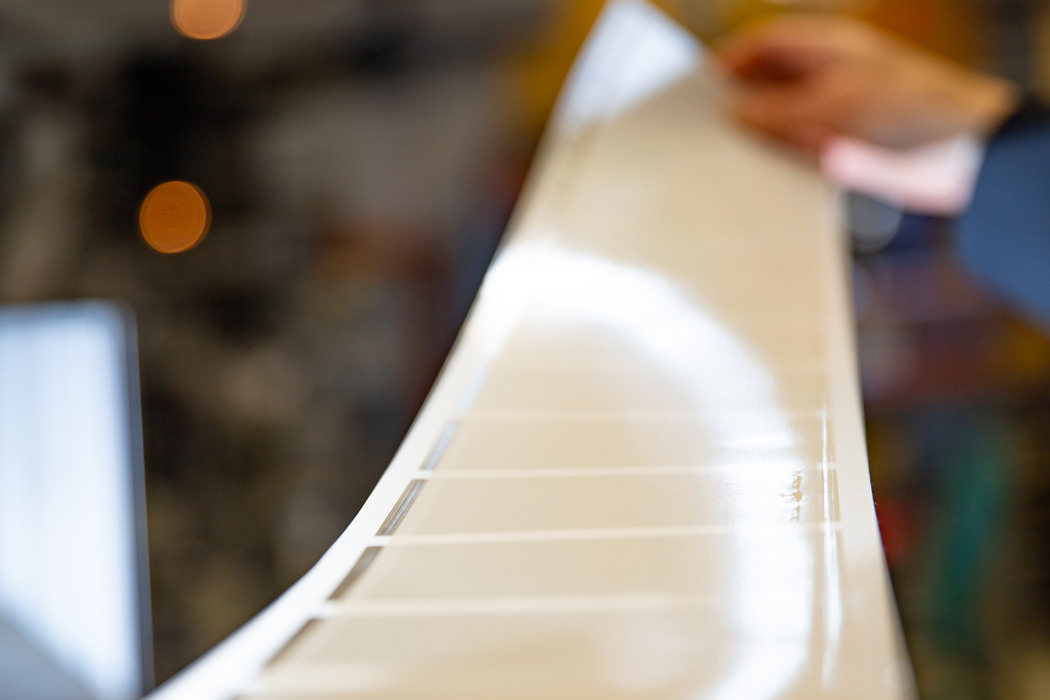
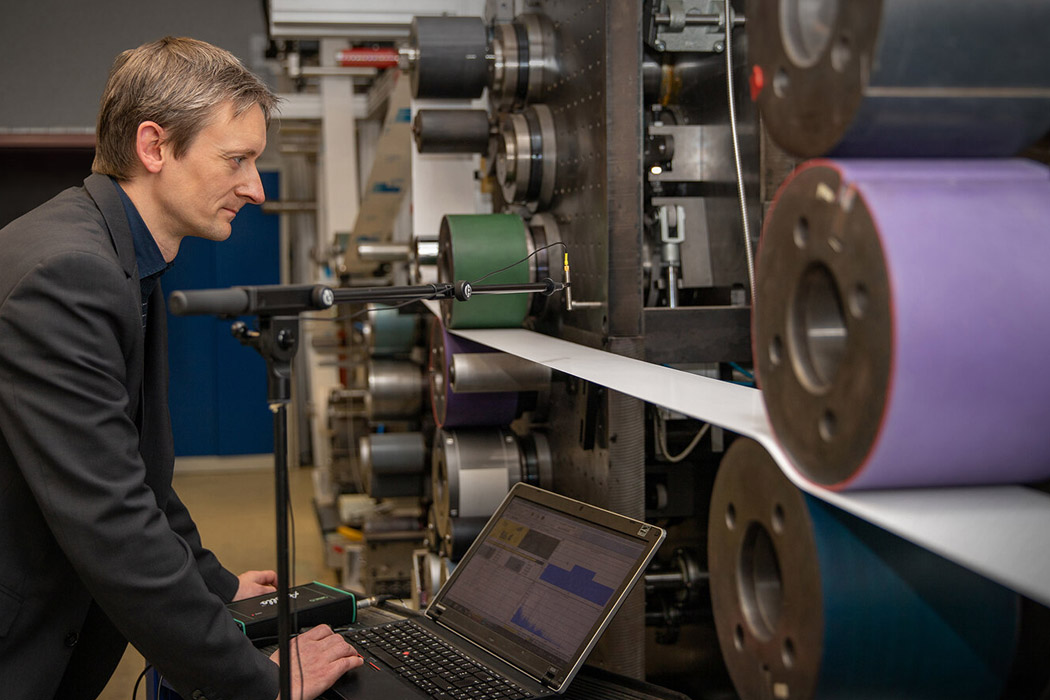
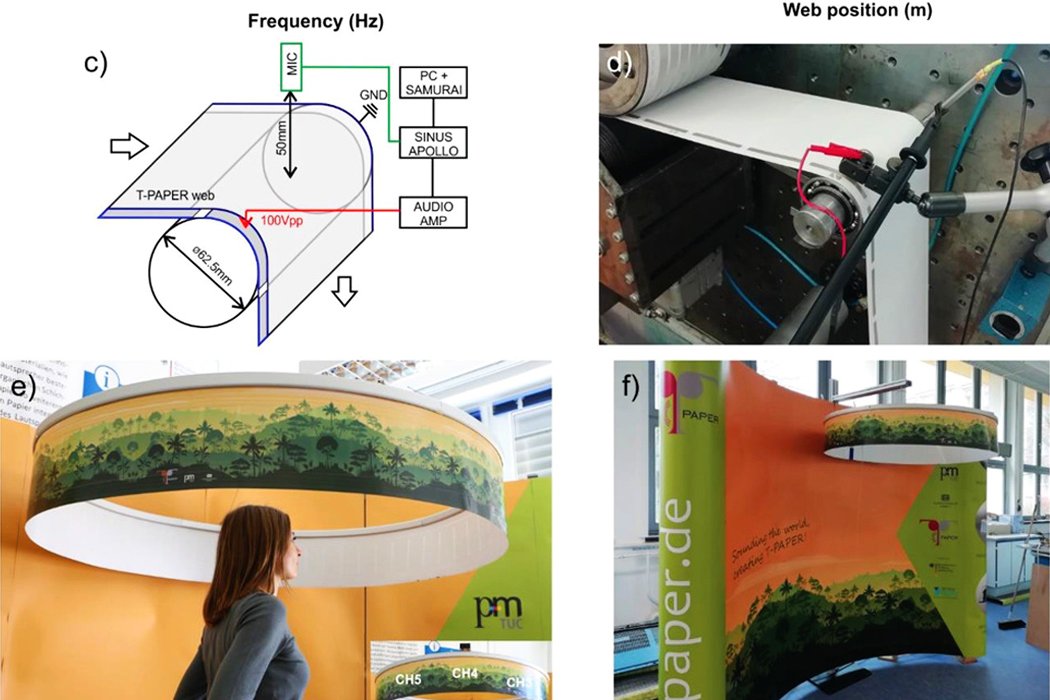
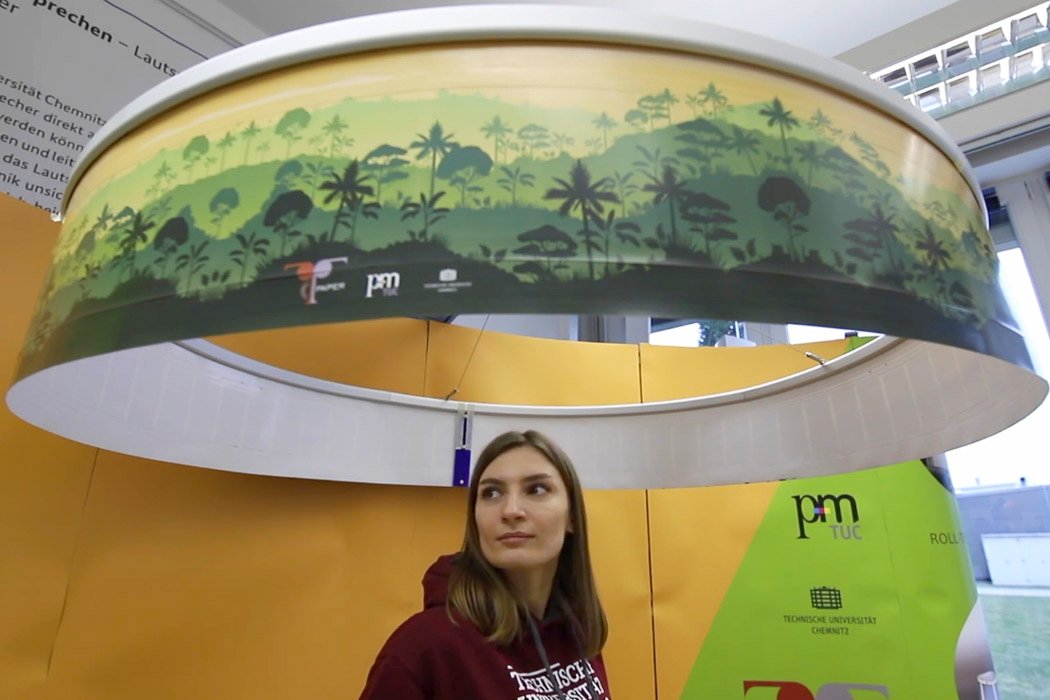
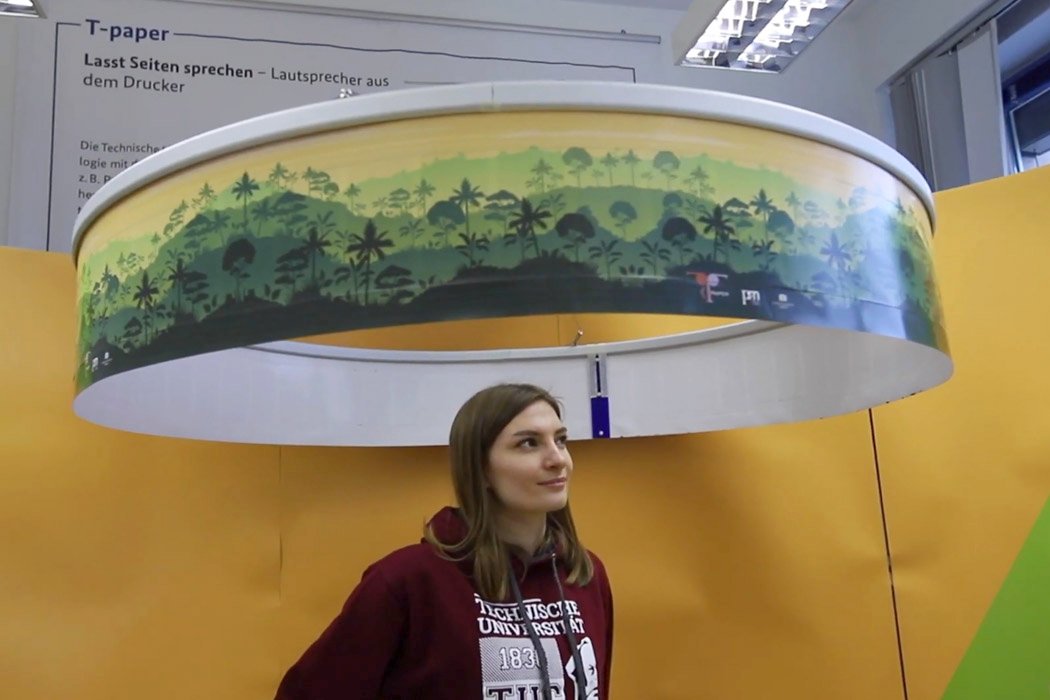
Last year a team of researchers published a paper detailing a method of boosting visual contrast and image quality in stereoscopic displays. The method is called Dichoptic Contrast Enhancement (DiCE) and works by showing each eye a slightly different version of an image, tricking the brain into fusing the two views together in a way that boosts perceived image quality. This only works on stereoscopic displays like VR headsets, but it’s computationally simple and easily implemented. This trick could be used to offset some of the limitations of displays used in headsets, for example making them appear capable of deeper contrast levels than they can physically deliver. This is good, because higher contrasts are generally perceived as being more realistic and three-dimensional; important factors in VR headsets and other stereoscopic displays.
Stereoscopic vision works by having the brain fuse together what both eyes see, and this process is called binocular fusion. The small differences between what each eye sees mostly conveys a sense of depth to us, but DiCE uses some of the quirks of binocular fusion to trick the brain into perceiving enhanced contrast in the visuals. This perceived higher contrast in turn leads to a stronger sense of depth and overall image quality.
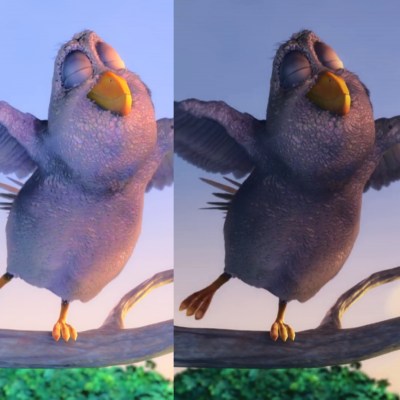
To pull off this trick, DiCE displays a different contrast level to both eyes in a way designed to encourage the brain to fuse them together in a positive way. In short, using a separate and different dynamic contrast range for each eye yields an overall greater perceived contrast range in the fused image. That’s simple in theory, but in practice there were a number of problems to solve. Chief among them was the fact that if the difference between what each eyes sees is too great, the result is discomfort due to binocular rivalry. The hard scientific work behind DiCE came from experimentally determining sweet spots, and pre-computing filters independent of viewer and content so that it could be applied in real-time for a consistent result.
Things like this are reminders that we experience the world only through the filter of our senses, and our perception of reality has quirks that can be demonstrated by things like this project and other “sensory fusion” edge cases like the Thermal Grill Illusion, which we saw used as the basis for a replica of the Pain Box from Dune.
A short video overview of the method is embedded below, and a PDF of the publication can be downloaded for further reading. Want a more hands-on approach? The team even made a DiCE plugin (freely) available from the Unity asset store.
[via Road to VR]
When it comes to hackers we love, there’s no better example than Jeroen Domburg, a.k.a. Sprite_TM. Sprite’s now working for Espressif, makers of the fantastic ESP8266 and ESP32, where he created a miniature Game Boy and turned this PocketSprite into a real product. He’s installed Linux on a hard drive, and created a Matrix of virtualized Tamagotchis. In short, if you’re looking for someone who’s building the coolest, most technical thing of sometimes questionable utility, you need look no further than Sprite_tm.
Sprite was back at this year’s Superconference, and again he’s bringing out the big guns with awesome hardware hacks. This time, though, Sprite is tapping into his artistic side. Sprite is very accomplished in making PCB art and DaveCAD drawings, but actual art is something that’s been out of reach. No problem, because you can just buy an inkjet printer and make your own art. Sprite’s doing something different, and he’s turning his inkjet into a Magic Paintbrush.

This hack began by buying a simple HP inkjet printer from China for $28 USD. There’s some interesting hardware in this cheap printer — an ARM processor that might run Linux, there’s a big ‘ol serial Flash chip with all the code completely unencrypted, and there’s a serial port that spits out debugging info. On the printer carriage itself, there’s an encoder, but the real story here is in the ink cartridge itself. There’s a reason inkjet cartridges cost more than the printer itself. Inside each inkjet cartridge, there’s a reservoir of ink, and a series of tiny holes. Right beside those holes, there’s a small heating element. When current is applied to that heating element, the ink literally boils (yep, that’s where the trademark ‘Bubblejet’ came from) and squirts out the nozzle onto a piece of paper.
The first HP ink cartridge had twelve of these nozzles, which is easy enough to control directly from a computer or microcontroller. To print faster, though, you’re going to need more nozzles, and that means more heating elements. To do this, HP engineers simply lay out the nozzles in a grid, and control each nozzle with a MOSFET and a matrix that will heat up these nozzles individually. The HP cartridge in Sprite’s printer is much more complex, and after removing the metal mask on the printer cartridge and carefully inspecting the silicon underneath, he was presented with hundreds of nozzles, all controlled through just a handful of pins. That’s alright, because oscilloscopes exist, and this is something that can be eventually reverse engineered.
After a few tries, Sprite got his inkjet cartridge squirting ink everywhere, which meant only one thing: he had to turn it into a magic marker that could draw in any color. A quick bit of KiCAD later, and Sprite had a PCB that wrapped around the ink cartridge that printed nyan cats on anything.
 Of course, being able to print nyan cats on everything from skin to lattes is cool, but with the simple addition of a color sensor, Sprite’s magic marker can become a marker that will write in any color. Yes, if you hold this magic marker up to a banana, it will write in yellow. Hold it up to an apple, and it’ll do green or red. If this sounds familiar, you’re right: this is the idea behind the perpetual Kickstarter scam, the Scribble pen, but this one works.
Of course, being able to print nyan cats on everything from skin to lattes is cool, but with the simple addition of a color sensor, Sprite’s magic marker can become a marker that will write in any color. Yes, if you hold this magic marker up to a banana, it will write in yellow. Hold it up to an apple, and it’ll do green or red. If this sounds familiar, you’re right: this is the idea behind the perpetual Kickstarter scam, the Scribble pen, but this one works.
If you haven’t watched the video, please do. Sprite’s presentations are as humorous and enjoyable as they are informative and technical. And thanks again to Sprite for the great talk!
Jenn Fujikawa of justJENN recipes has shared a detailed set of instructions that show how to create a Star Wars-themed Tauntaun cookie that includes yummy candy innards spilling out of its carcass. Jenn‘s wonderful step-by-step guide is available to view on the official Star Wars website.
Imagine you’re stranded on the ice planet Hoth, blinded by snow, surrounded by ice. Alone, afraid, you only have one option to survive and that’s to cut open a tauntaun and eat its candy innards!
Tauntauns aren’t really filled with candy, but it would be amazing if they were. These sugar cookie snow lizards are stacked and filled with candy entrails that will surely save your hunger in a pinch. (read more)
photos by Jenn Fujikawa
This week Erik Knuzten, co-author of Urban Homestead:Your Guide to Self-Sufficient Living in the Heart of the City and Making It: Radical Home Ec for a Post-Consumer World joins us with a list of must have tools for self-sufficient, DIY home living. Check out Erik’s Root Simple website and podcast (which he runs with his partner, Kelly Coyne) for more on how to build yourself a sustainable DIY lifestyle.
Show Notes:
Subscribe to the Cool Tools Podcast on iTunes | RSS | Transcript | Download MP3 | See all the Cool Tools Show posts on a single page

KoMo FlicFloc $170
“What it allows you to do is you throw basically raw oat seeds into it, you turn a handle – it’s manual -, and you get flaked oats which then I’ve been using mostly for muesli, and it’s totally changed my breakfast life. It’s easy to use and delicious and very, very nutritious.”

KoMo Fidibus Classic $621
“This one is a dove-tailed solid wood on the outside. It has two stone mills inside of it and a very powerful electric motor. I’m a real avid whole-grain baker. Again, it’s just like rolling your own oats, is you can keep the grains on hand and mill them as you need them to make bread. Now, what this does is it opens up a whole world of grain…When you have your own mill, you can choose the grain, the variety of wheat that you want to mill, and what I think a lot of people don’t realize is that there’s a huge biodiversity in wheat and rye and other grains and when you have your own mill you can select different grains to work with.”

Whirley-Pop popcorn popper (for roasting coffee) $20
“With the Whirley-pop all you do is put it on the stove top and one of the tricks is getting the heat right. That’s some amount of trial and error in that. Throw a half pound of green coffee beans in there, turn it, and in about nine, ten minutes, you’ve got roasted. It’s just that simple.”

Sweet Maria’s coffee roasting instructions Free
“Even with the mail order charges from Sweet Maria’s, I’m basically getting $20 a pound coffee for $10 a pound. Again, being able to select the green beans that I want to use has just totally changed my life actually. It made breakfast exciting every morning.”

Xtracycle Electric version $3500
“Sometimes called a long-tail bike. It’s like having pannier sacks on steroids or kind of like having a bike for two that instead of the second person it’s all cargo. Unlike a lot of cargo bikes, the European style that are kind of big and broad, this one’s narrow so you can squeeze through traffic in L.A. on it, gracefully. I can easily put four bags of groceries on that thing.”
The Office Time Machine is a copyright reform project created by Joe Sabia and programmed by Aaron Rasmussen that uses the cultural references from all nine seasons of the television show The Office to showcase the importance of them to other content. The project allows users to choose a year, AD or BC, and it then plays a video featuring all the cultural references in the show from that time period.
Sabia gathered the non-fictional references together over a year and a half by ripping them from DVDs provided by Netflix through his subscription. All 1,300 references were then divided into years and given informational blurbs, though there remains a small number of references that Sabia couldn’t pinpoint.
My name is Joe Sabia and I created this project to advocate for copyright reform and highlight the importance of fair use in protecting creators and their art. To prove culture is not only everywhere, but that certain references to films, songs, and works of art are critical for our collective understanding of comedy and to the importance of relating to content, I found every cultural, real-life reference from every episode of The Office.
via Joe Sabia
USA squares off with Denmark for some intense cat curling at the 2006 Winter Olympics.
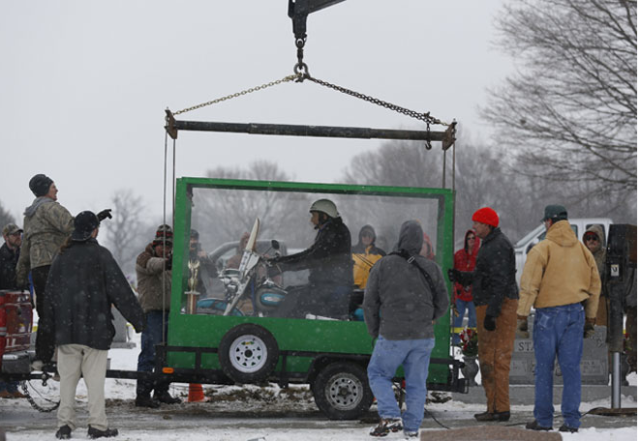
photo by Jonathan Quilter/Columbus Dispatch
84-year old Billy Standley of Mechanicsburg, Ohio, who recently died of lung cancer, was buried riding atop his 1967 Harley-Davidson motorcycle, attired in full riding gear, encased in a coffin made of wood and plexiglass. According to his family, he’d been making these arrangements for the better part of two decades.
It was a funeral he started planning 18 years ago, well before he could have known about the lung cancer that killed him on Sunday at age 84. “This was his dream,” said one of his daughters, Dorothy Brown. “He was a one-of-a-kind.” – Columbus Dispatch
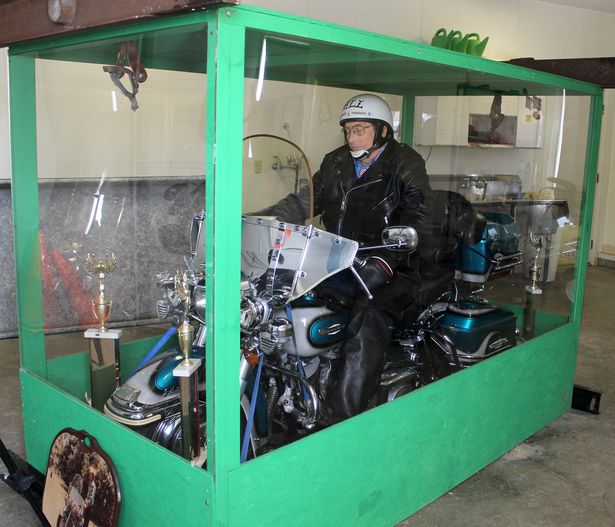
photo by Jeff Guerini/WHIO TV

photo by Jeff Guerini/WHIO TV
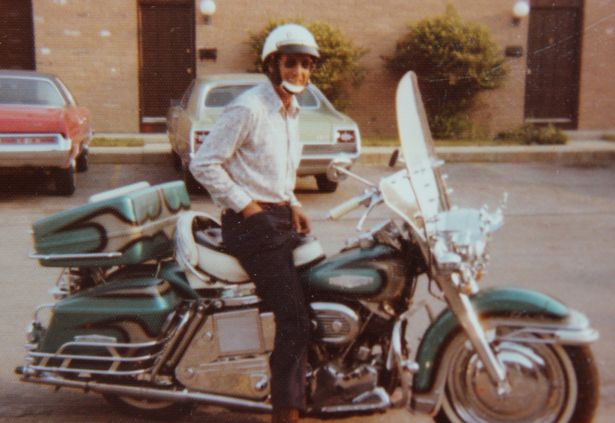
photo via WHIO TV
via Columbus Dispatch, Dayton Daily News
Thanks Jason Laskodi!
Josh Ovalle has created Minimum Max, a short film about his experience with ADHD as told by a boy named Max. In it, he explores the balance between his mood and his grades and the difficult choice about whether or not to take his medication.
via reddit, The Awesomer